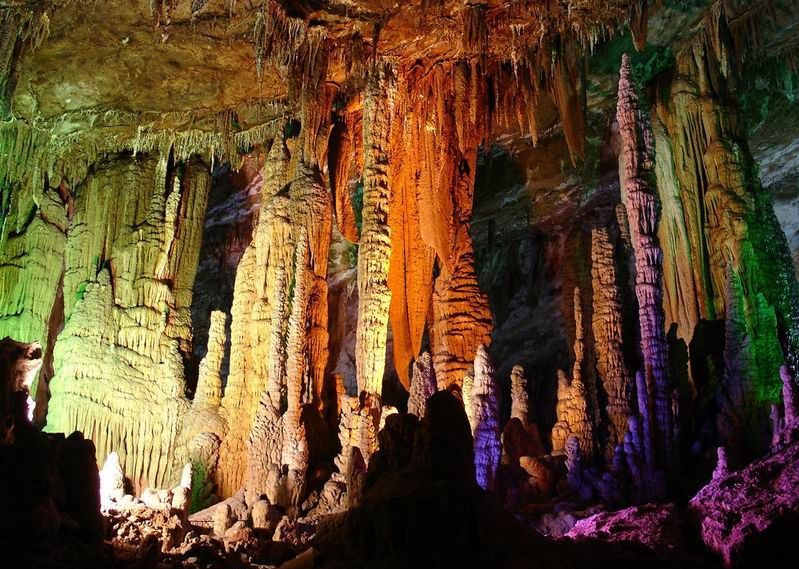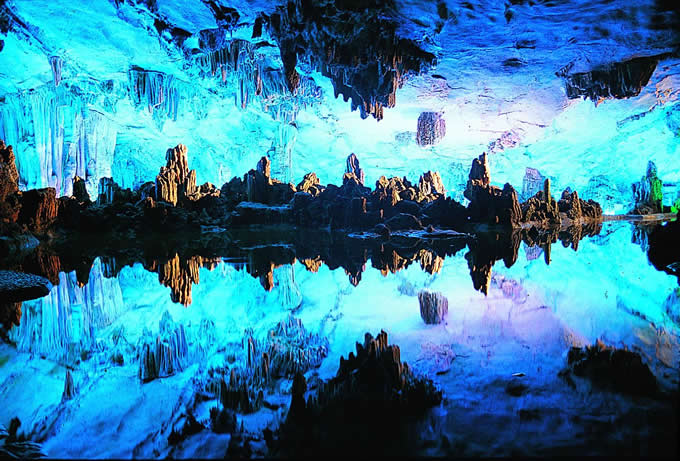Sightseeing in Guilin
Guilin is regarded as the most picturesque city in China. Two crystal-clear rivers meander through the city, which are encircled by hills with unusual and bizarre rock formations and caves inside. Two crusted movements of earth took place about 200 million years ago thrusting the limestone sediments out of the sea bottom. They were forced upwards more than 200 meters to the surface. This karst formation was molded through many years of erosion by the wind and rain to become the hills and rocks with bizarre shapes. There are numerous complete karst (limestone sites), which are of high scientific value and tour value. The classical attractions include the "Three hills, Two caves and One river" (referring to Diecai Hill, Fubo Hill and Elephant Trunk Hill, Reed Flute Cave and Seven-Star Cave, and the world-renowned Lijiang River). Guilin's unique natural and man-made landscapes provide an abundance of options for a never-ending and unforgettable lifetime journey. Whether you would like to take a dream vacation or plan to touch nature in person, you will be exceptionally surprised by what Guilin has to offer.
1. Lijiang River
Lijiang River Scenic Area is the world's largest and most beautiful karst landscape resort. The Lijiang River is the highlight and climax of any journey to Guilin. The 54 km waterway of the twisty Lijiang River between Zhujiang Pier and Yangshuo cuts between thousands of picturesque peaks. Created by a stirring ''Movement of Mother Nature'', the most famous attractions along the Lijiang River Cruise are the Waterfall near Yang Causeway, Misty scene of Langshi, Nine-Horse Fresco, Charming Reflection at Yellow-cloth Shoal and Xingping Wonderland. All of these make the Lijiang River Cruise a perfect everlasting memory.

2. Elephant Trunk Hill
As the emblem of Guilin City, the Elephant Trunk Hill lies at the meeting point of the Peach Blossom and Lijiang River. It was given its name because the hill looks exactly like an elephant drinking from the river with its trunk. Besides, it is a masterpiece of karst landscape, composed of pure limestone deposited on the sea floor 360 million years ago. This hill resembles an elephant sucking water. The Elephant Eye Rock perches high up the hill, with a hole running through it from left to right. Between the elephant's trunk and the body is a big round hole. It's reflection in the water is the exact image of the full moon, and hence its name "water Moon Cave". On the cliff there are more than 50 pieces of carved inscriptions belong to different periods. At the moonlight night, you will feel yourself merged with the moon in the sky, the moon in the cave and the moon at the river bottom. It is a symbol and landmark of the city.

3. Guilin Prince City
Located in the center of Guilin, Jingjiang Prince's Residence (also named Guilin Prince City) embraces a solemn atmosphere, guarded by high walls and a deep gate. It was built in 1372, and the city's wall was constructed in 1393. Having a history of more than 630 years, Jingjiang Prince's Residence finished its construction earlier than the Imperial Palace of Beijing. Besides, the Jingjiang Mausoleum is located at the foot of Yao Mountain in the eastern suburb of Guilin. It is a mausoleum for a royal family - the Jingjiang Family in Ming Dynasty whose eleven generations were buried. Moreover, there are more than 300 tombs covering 100 square kilometers, making up the biggest ancient tomb group in south China. The well-preserved tombs have become important relics of culture and history in Guilin.

4. Seven-Star Cave
The Seven-Star Park boasts of the green hills, crystal water, fantastic caves and beautiful rocks. The ancient Floral Bridge straddles at the southern entrance. To the east of Seven-Star Hill stands the Camel Hill, at the foot of which the US president Bill Clinton once made a public speech on environmental protection in 1998. Besides, the Seven-Star Cave, the zoo and potted landscape Garden are worthy of being seen.

5. Reed Flute Cave
Situated at the foot of Guangming Hill in northeastern Guiln, the Reed Flute Cave got its name from the kind of reed growing immediately outside the cave entrance, which is used to make fine flutes. It has been a tourist attraction for more than 1,000 years. Inside the cave, there are various stalagmites, stone curtains, stone flowers and stone pillars, which constitute a unique charm, making it known as a palace of natural art.

- Paper Submission Deadline
January 31, 2016 - Notification of Acceptance
March 24, 2016 - Final Paper Submission
April 10, 2016 - Author Registration
April 10, 2016 - Congress Date
June 12–15, 2016
Contact Us
Address: 95 Zhongguancun East Road,
Beijing 100190, China
Email: wcica2016@foxmail.com
Fax: +86-10-8254-4799





